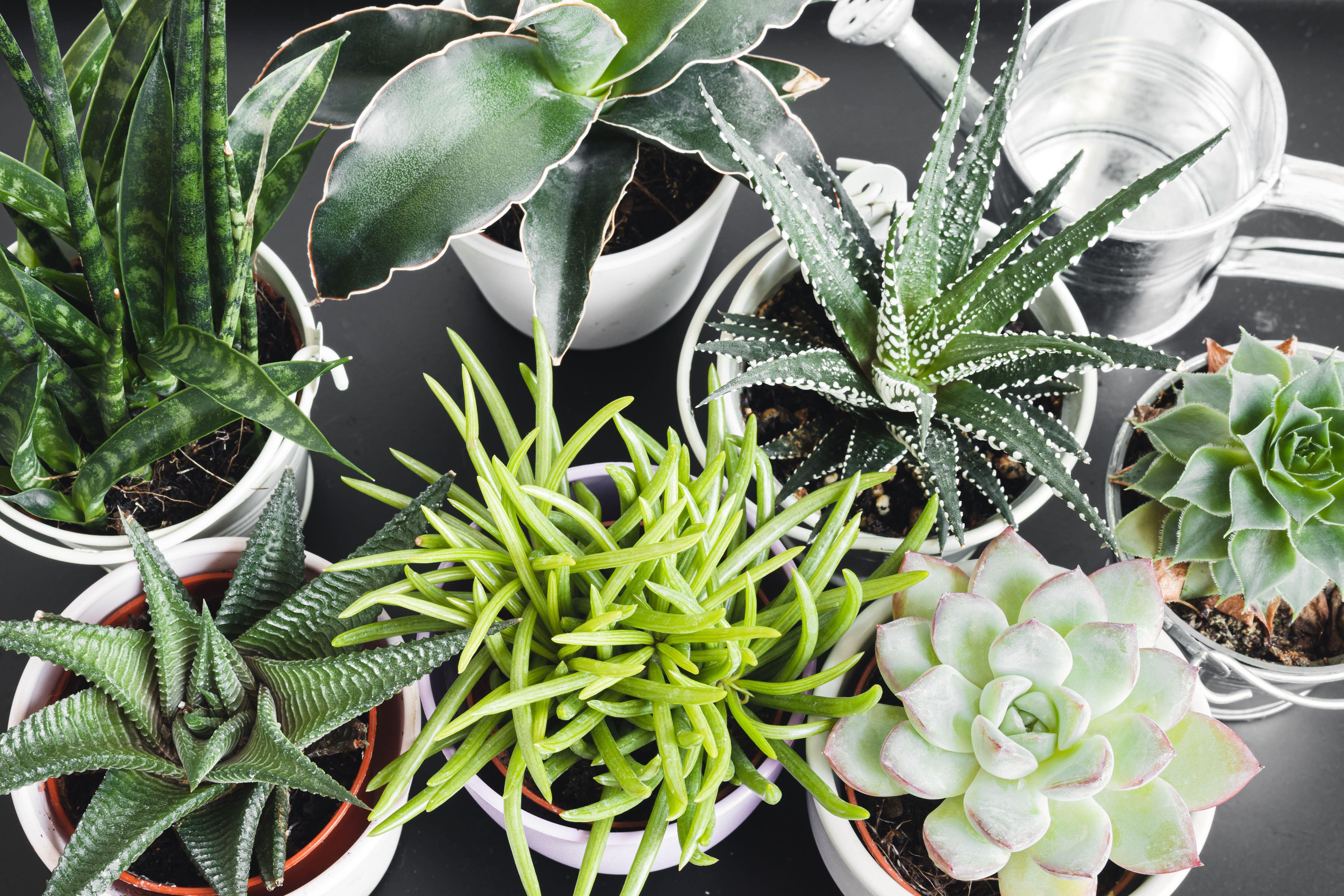These easy-care houseplants don’t need much water
An inventive plant exhibition offers creative tips on making your greenery thrive. By Hannah Stephenson.

Your support helps us to tell the story
From reproductive rights to climate change to Big Tech, The Independent is on the ground when the story is developing. Whether it's investigating the financials of Elon Musk's pro-Trump PAC or producing our latest documentary, 'The A Word', which shines a light on the American women fighting for reproductive rights, we know how important it is to parse out the facts from the messaging.
At such a critical moment in US history, we need reporters on the ground. Your donation allows us to keep sending journalists to speak to both sides of the story.
The Independent is trusted by Americans across the entire political spectrum. And unlike many other quality news outlets, we choose not to lock Americans out of our reporting and analysis with paywalls. We believe quality journalism should be available to everyone, paid for by those who can afford it.
Your support makes all the difference.If you want inspiration for displaying drought-tolerant houseplants in your home, head to RHS Garden Wisley in Surrey (rhs.org.uk/gardens/wisley), which has just launched a new glasshouse display.
The exhibition, entitled Houseplant Takeover – Deep Sea Dive, offers everything from suspended airplants shaped into fish frames, to succulents transformed into the shell of a turtle.
It builds on the continuing trend of houseplants – particularly popular among younger audiences who lack outdoor space – and aims to inspire visitors to think about innovative ways of integrating greenery indoors, with a particular focus on wise watering, while also showcasing drought-tolerant plants.
There are little fish created from chicken-wire frames covered with Spanish moss, with fish eyes from lithops (living stones), a seahorse created from tillandsia and echeveria and an impressive indoor hanging basket adorned with succulents.
Some of the exhibits could be replicated at home by budding horticultural crafters with a little imagination, using use old palm fronds to make fish tails, creating a fish shape out of wire and covering it with sphagnum moss, using stone plants for the eyes.
Emma Allen, RHS Garden Wisley manager, explains: “All the plants we were looking at were pretty drought-tolerant.”
In a tour during the the build-up to the exhibition, she pointed out plants you can grow at home which will thrive with minimum watering.
Epiphytic cacti
“These normally grow on trees or other living organisms, so don’t require soil,” she explains. The smaller rhipsalis are readily available from garden centres and nurseries.
“They don’t need much watering and you can keep them in a hanging basket in fairly decent light levels,” she suggests. “We like the ones which have a purple tint to them. Their leaves are almost like a Christmas cactus.”
Bromeliads
“Bromeliads are colourful houseplants which are also epiphytes, so they grow on trees (in the wild) and don’t need water and soil in the same way (as other houseplants), and again they need good light levels.”
Euphorbia
“Quite often euphorbia look like cacti but they are not. They are from a completely different family. Euphorbia are from Africa, while cacti are from America. Euphorbia Trigona f. rubra (the African milk tree), has a lovely purple colour. I don’t water it often and they grow quite quickly.”
Pachypodium
Also known as the Madagascar palm, these unusual-looking shrubby succulents have leaves growing around the swollen trunk.
You can place them in small pots, although they do eventually grow very tall, but they need little watering and the bigger, more mature specimens produce beautiful white flowers.
Flowering plants
“Agaves look the same as aloes but are very different plants and often get confused until they flower,” Allen explains.
“All aloes repeat flower, while agaves only flower once in their lifetime and then they die, sending out vegetative pups at the base, or they reseed.
“Aloes will flower as houseplants in late winter, in a mix of colours, depending on the species. They are not tropical plants, so your house temperature should be fine.”
Echeveria will regularly flower in shades of pink, red, orange, yellow and white. The flower stalks emerge from the centre of the plant and you can put them outside in summer, where they should continue to flower, she says.
Cacti can be difficult to flower
“Some cacti are difficult to get to flower, because getting high-enough light levels can be hard,” says Allen.
“You need to put them in as much sun as possible. So I’d go down the euphorbia and succulent route to start. But crassula should flower for you if the light levels are high enough.”
Snake plants
Sansevieria (snake plants) are also a good plant if you are a neglectful owner, she suggests, as they require very little water, will tolerate bright direct light to moderate shade and will bounce back if you don’t water them for weeks.
Cycas revoluta (Japanese sago palm)
These make unusual houseplants with their dramatic, architectural green foliage, arching, pinnate-shaped fronds with sharp tips spreading out around a central cone.
Native to southern Japan and China, they are not actually palms but cycads, evergreen perennials with dark, woody trunks. The species dates back millions of years to prehistoric times.
If you want a tall plant, buy it big because they are slow-growing. They should thrive in free-draining soil or compost in full sun and you can put them outside in the summer. “You can pretty much grow these outside in London and milder parts of the UK,” says Allen.
Shade tolerant
Those which need less light include ferns, which also don’t need a lot of water, she advises. Phlebodium ‘Blue Star’, for instance, can soften a dark corner. Shade-tolerant succulents include gasteria and haworthia, while a few aloe and agave can get sunburnt, so can tolerate some shade.
Houseplant Takeover – Deep Sea Dive runs until March 12. For details visit rhs.org.uk